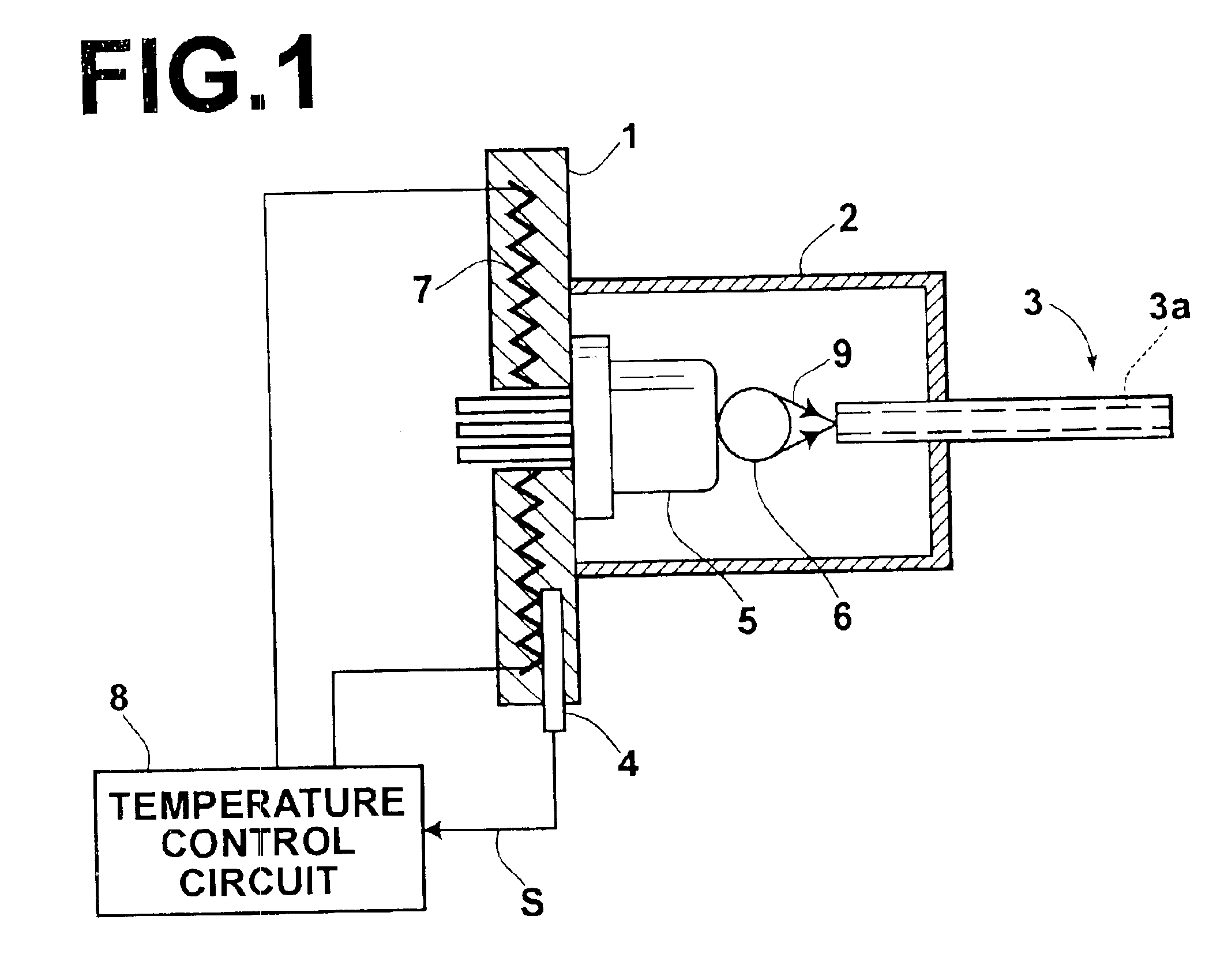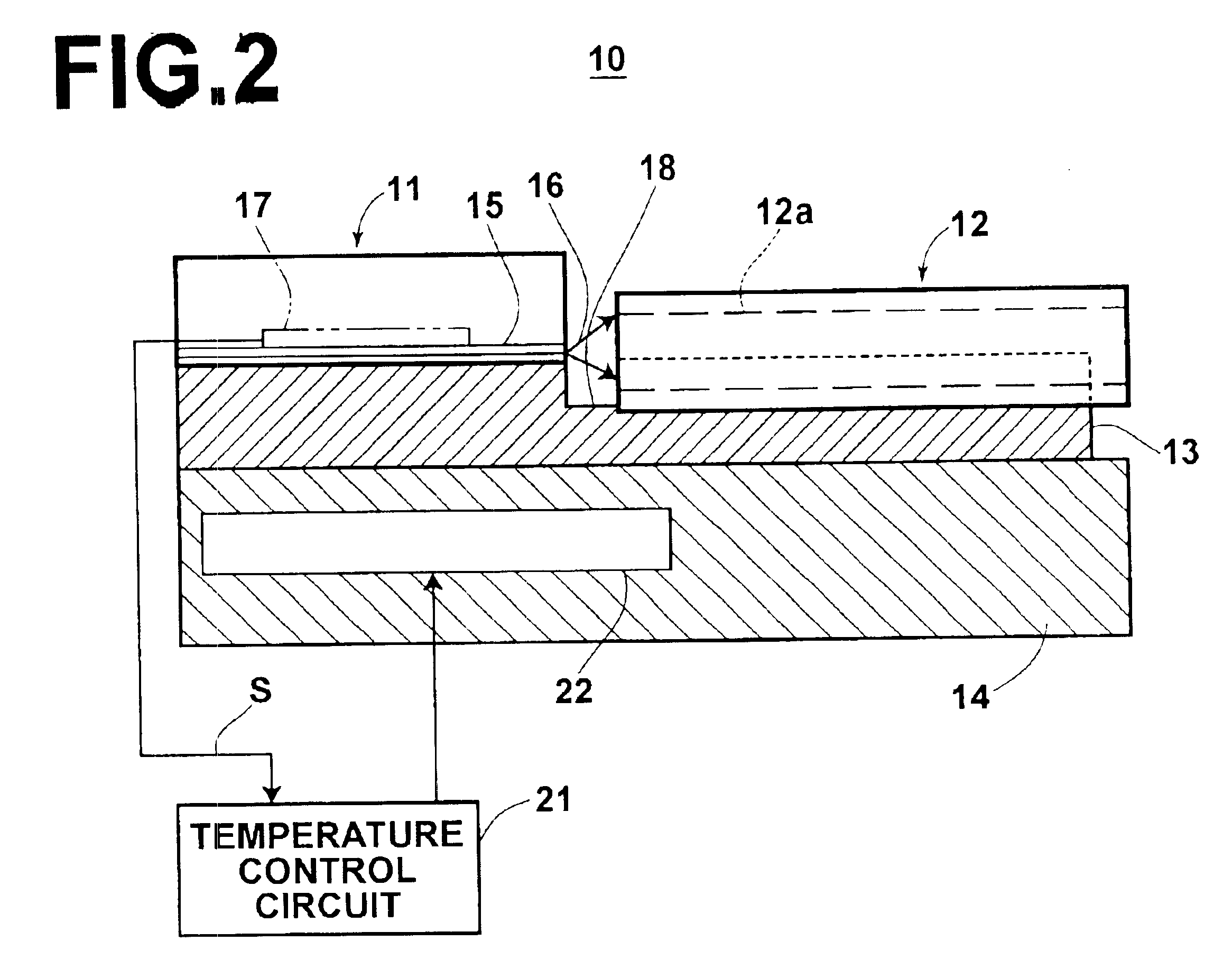Transmission apparatus using a plastic fiber
a technology of transmission apparatus and plastic fiber, which is applied in the direction of cladded optical fiber, semiconductor laser, instruments, etc., can solve the problems of obstructing the popularization of fibers, difficult to perform fiber laying operations under ordinary environmental conditions, and unable to obtain perfectly extinct states with respect, etc., to achieve stable transmission characteristics, low cost of transmission apparatus, and low propagation loss
- Summary
- Abstract
- Description
- Claims
- Application Information
AI Technical Summary
Benefits of technology
Problems solved by technology
Method used
Image
Examples
first embodiment
FIG. 1 is a partially cutaway side view showing the transmission apparatus using a plastic fiber in accordance with the present invention. The section illustrated in FIG. 1 constitutes a light sending module section. As illustrated in FIG. 1, the transmission apparatus comprises abase plate 1. The transmission apparatus also comprises a can type package 2, which is secured to the base plate 1. The transmission apparatus further comprises a plastic fiber 3, whose one end is inserted into the can type package 2. The transmission apparatus still further comprises a thermistor 4, which is located within a hole made through the base plate 1. The transmission apparatus also comprises an end face emission type of semiconductor laser 5, which is accommodated within the can type package 2 and has a stem fitted to the base plate 1. The transmission apparatus further comprises a ball lens 6, which is accommodated within the can type package 2. An electric heater 7 is built in the base plate 1....
second embodiment
A second embodiment of the transmission apparatus using a plastic fiber in accordance with the present invention will be described hereinbelow. FIG. 2 is a side view showing a second embodiment of the transmission apparatus using a plastic fiber in accordance with the present invention. FIG. 3 is a plan view showing part of the transmission apparatus of FIG. 2, which part is located above a submount of the transmission apparatus. FIG. 4 is a front view showing part of the transmission apparatus of FIG. 2, which part is located above a submount of the transmission apparatus. the transmission apparatus using a plastic fiber in accordance with the present invention constitutes a sending submodule 10, which is employed in a sending-receiving module 30 illustrated in FIG. 5 as will be described later. As illustrated in FIG. 2, the sending submodule 10 comprises a semiconductor laser chip 11, which is of the end face emission type. The sending submodule 10 also comprises a PMMA plastic fi...
PUM
 Login to View More
Login to View More Abstract
Description
Claims
Application Information
 Login to View More
Login to View More - R&D
- Intellectual Property
- Life Sciences
- Materials
- Tech Scout
- Unparalleled Data Quality
- Higher Quality Content
- 60% Fewer Hallucinations
Browse by: Latest US Patents, China's latest patents, Technical Efficacy Thesaurus, Application Domain, Technology Topic, Popular Technical Reports.
© 2025 PatSnap. All rights reserved.Legal|Privacy policy|Modern Slavery Act Transparency Statement|Sitemap|About US| Contact US: help@patsnap.com



